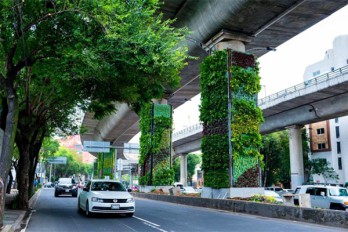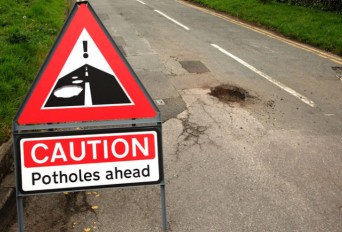Prince Edward Island (PEI) unveils 10-year energy strategy to grow on-island renewables and achieve net-zero by 2040

The province of Prince Edward Island (PEI) has released a comprehensive 10-year energy strategy covering the period 2026-2035, aiming to substantially expand on-Island renewable power generation, modernize transmission infrastructure, enhance affordability for consumers, and meet its legislated target of net-zero greenhouse-gas emissions by 2040.
The strategy responds to a sharp rise in electricity demand, driven by population growth, electrification of heating and transport, and greater home-energy use, and to a current reliance of approximately 85% on imported electricity from New Brunswick carried via ageing submarine cables. The provincial government projects a 27% generation capacity shortfall by 2033 if additional on-island resources and storage are not developed.
The document is structured around five strategic “pillars” and outlines 20 recommended actions:
- Reform mandates (regulatory frameworks and institutional readiness)
- Save energy (energy-efficiency and demand-side management)
- Enhance the grid (infrastructure upgrades, transmission, and distribution modernization)
- Expand clean energy (wind, solar, and battery-storage deployment on-island)
- Enable solutions (capacity building, community and Indigenous engagement, innovation).
One of the key commitments is to increase local generation of wind and solar and to accelerate deployment of on-island battery energy-storage systems (BESS) to reduce import dependence and enhance supply reliability. The strategy also addresses affordability and energy equity issues, establishing a new Office of the Consumer Advocate and expanding retrofit and electrification programs for households and businesses.
In the infrastructure-engineering domain, the roadmap signals major civil and electrical-engineering investments: upgrading submarine cable connections, replacing dated oil-fired generation units (currently under 0.2% of on-Island supply), reinforcing grid resilience against extreme weather, and integrating distributed energy resources (DERs) across the network. Additionally, the strategy emphasizes the technical challenge of balancing increasing electrification loads, linked to heat pumps, EVs, and building electrification, with variable renewable-energy generation and storage technologies on a small-scale island grid.
The clean-energy transition also commits to economic development: PEI envisions growth in renewables-industry jobs, community-owned generation projects, partnerships with Indigenous communities, and local innovation hubs for long-duration storage and smart-grid solutions.
In summary, PEI’s strategy places reliability, affordability & equity, sustainability, and economic development at its core, positioning the province to transition from a heavy energy-import dependency toward a cleaner, domestically-oriented energy system by 2035 and beyond.
Sources: Government of Prince Edward Island, PVBuzzMedia, Government of Prince Edward Island, Canadian Renewable Energy Association (CanREA)
Want to read more like this story?

Vertical gardens in Mexico City to combat pollution
Jan, 13, 2017 | News‘Via Verde’ project is turning the pillars of a busy motorway green ‘Via Verde&...

Characteristics of Load Bearing Masonry Construction
May, 23, 2019 | NewsLoad bearing masonry construction is a building technique in which wall elements are used as the fra...

Taipei 101’s impressive tuned mass damper
Apr, 03, 2024 | NewsTaiwan was struck on Wednesday, April 3, 2024, by the most powerful earthquake it has experienced i...

Dutch greenhouses have revolutionized modern farming
Feb, 06, 2018 | NewsAt optimal growing conditions, each acre in the greenhouse yields as much lettuce as 10 outdoor acr...

Saudi Park Closed After 360 Big Pendulum Ride Crashes to Ground, 23 injured
Aug, 06, 2025 | NewsA serious mechanical failure occurred last week at Green Mountain Park in Taif, Saudi Arabia, when...

The Fatal Collapse That Stopped Rama II Construction and it's Dangerous Legacy: 2,500 Accidents and Counting
Mar, 16, 2025 | NewsIn the early hours of March 15, 2025, tragedy struck yet again on Bangkok’s Rama II Road. A concret...

The Line at Neom faces feasibility reassessment while construction continues
Nov, 01, 2025 | NewsThe Neom megaproject in Saudi Arabia, which is often described as the world’s largest construction...

Paving the Way: Innovative Solutions for Pothole Prevention and Repair
Jul, 19, 2024 | NewsUnderstanding the Pothole Problem Potholes are more than just a nuisance; they pose significant da...

The Billion-Dollar Airport Boom: 2025 Megaprojects Shaping the Skies
Jan, 14, 2025 | NewsAs air travel rebounds and infrastructure demands rise, U.S. airports are undergoing massive transf...
Trending

Solar Farms and Wind Turbines Tested and Failed by Storm Darragh

A New Icon of Infrastructure is Set to Open Soon: Inside China’s Tallest Bridge

Norway’s Historic Ship Tunnel Set to Begin Construction in 2026

The Legacy and Evolution of Braced Tube Structures

Aerial footage shows progress made in Saudi Arabia’s “The Line”

King Salman Gate unveiled adjacent to Mecca’s Grand Mosque

Copper mines in arizona targeted for reopening by BHP

